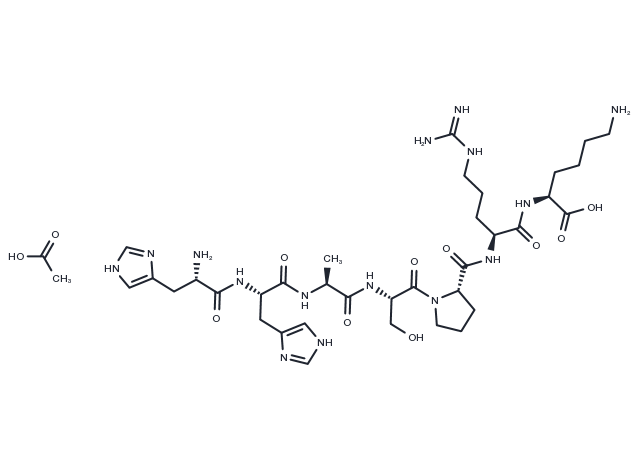keep away from moisture
Powder: -20°C for 3 years | In solvent: -80°C for 1 year

CDK2 acetate is a member of the eukaryotic S/T protein kinase family and its function is to catalyze the phosphoryl transfer of ATP γ-phosphate to serine or threonine hydroxyl (denoted as S0/T0) in a protein substrate.

| Pack Size | Availability | Price/USD | Quantity |
|---|---|---|---|
| 1 mg | In stock | $ 103.00 | |
| 5 mg | In stock | $ 413.00 | |
| 10 mg | In stock | $ 613.00 | |
| 25 mg | In stock | $ 979.00 | |
| 50 mg | In stock | $ 1,320.00 | |
| 100 mg | In stock | $ 1,780.00 | |
| 500 mg | In stock | $ 3,570.00 |

| Description | CDK2 acetate is a member of the eukaryotic S/T protein kinase family and its function is to catalyze the phosphoryl transfer of ATP γ-phosphate to serine or threonine hydroxyl (denoted as S0/T0) in a protein substrate. |
| In vitro | CDK2 (Cyclin-dependent kinase 2) is a member of the eukaryotic S/T protein kinase family and its function is to catalyze the phosphoryl transfer of ATP γ-phosphate to serine or threonine hydroxyl (denoted as S0/T0) in a protein substrate. The fully active CDK2 is in complex with HHASPRK (an optimal peptide substrate), namely interactions of CDK2 with peptide substrate and the dynamics of the G-loop. CDK2 participates in eukaryotic cell cycle regulation at the G1/S boundary. CDK2 deregulation has been proved to occur in tumor cells, evoking a strong interest in artificial and native inhibitors. CDK2 activity is tightly regulated by a complex mechanism, including a positive regulatory subunit binding, and phosphorylations at positive and/or negative regulatory sites[1]. |
| Molecular Weight | 891.99 |
| Formula | C37H61N15O11 |
| CAS No. | TP1875L |
keep away from moisture
Powder: -20°C for 3 years | In solvent: -80°C for 1 year
You can also refer to dose conversion for different animals. More
bottom
Please see Inhibitor Handling Instructions for more frequently ask questions. Topics include: how to prepare stock solutions, how to store products, and cautions on cell-based assays & animal experiments, etc.
CDK2 acetate(255064-79-0 free base) TP1875L Others CDK2 acetate(255064790 free base) CDK-2 acetate(255064-79-0 free base) CDK2 acetate(255064 79 0 free base) inhibitor inhibit
